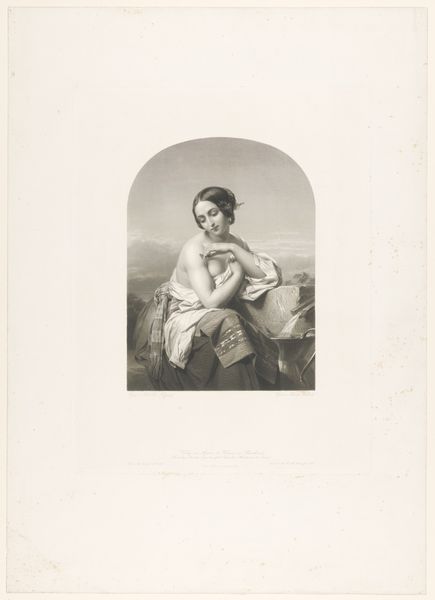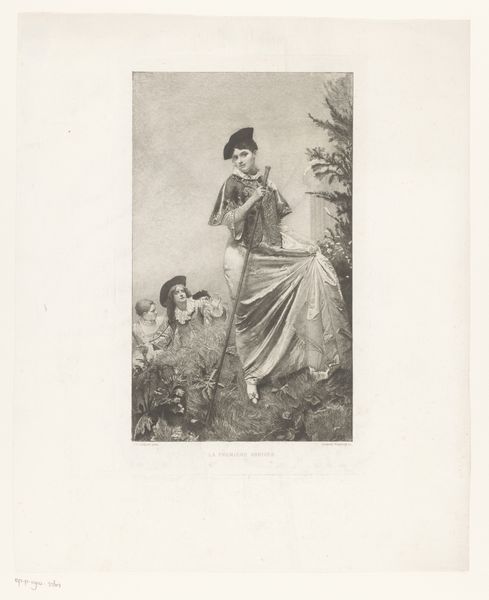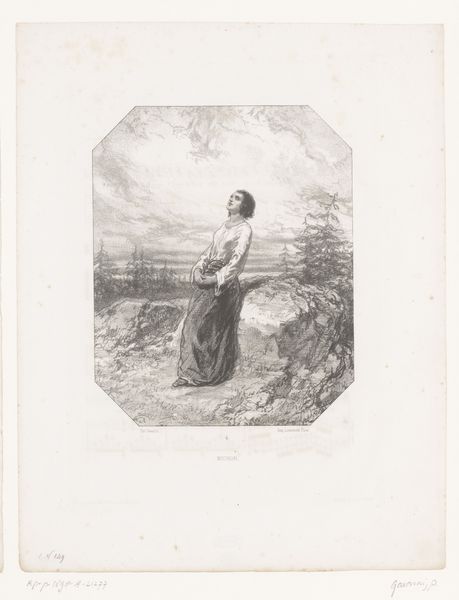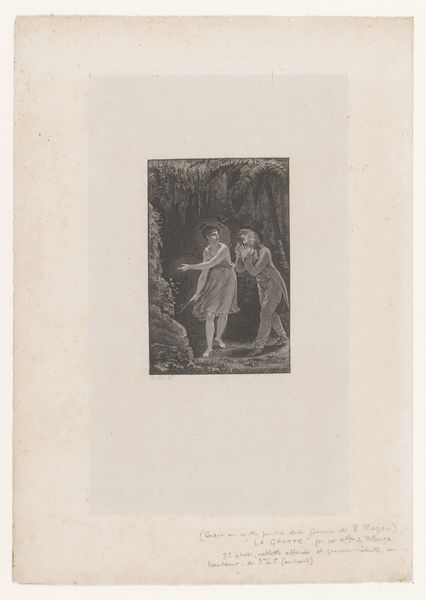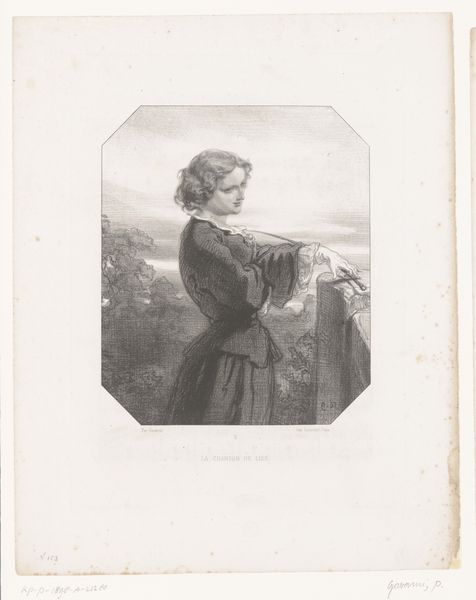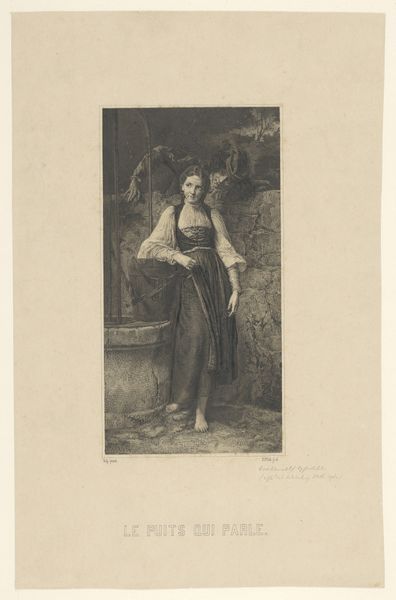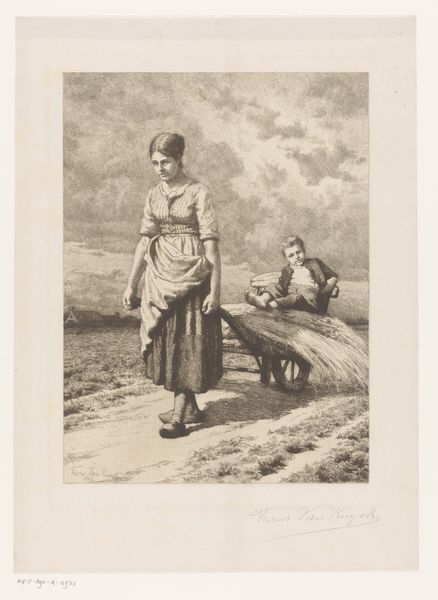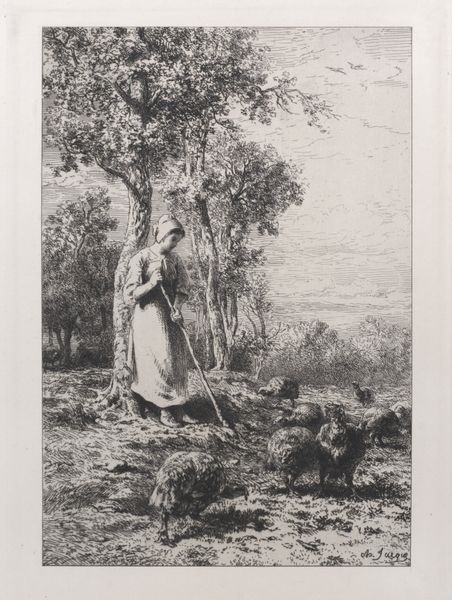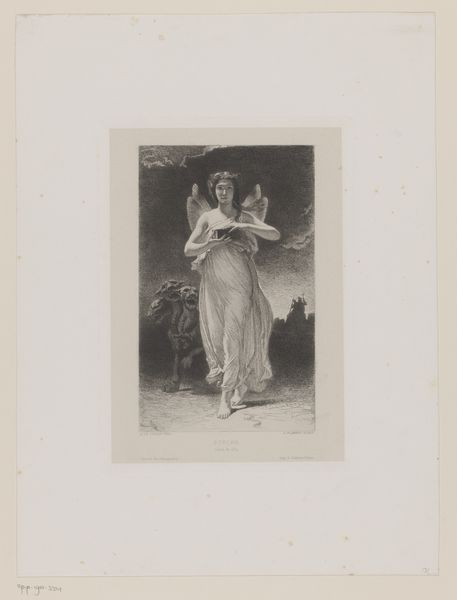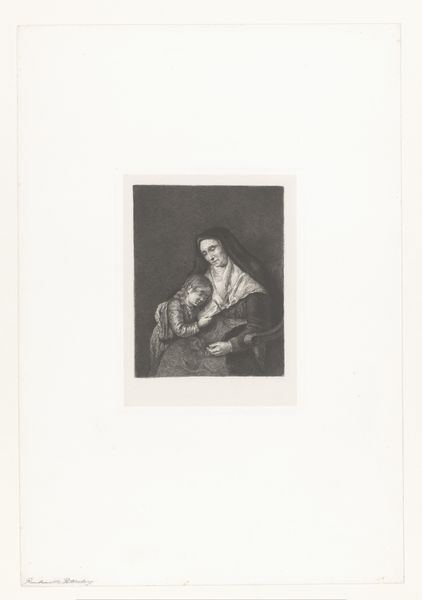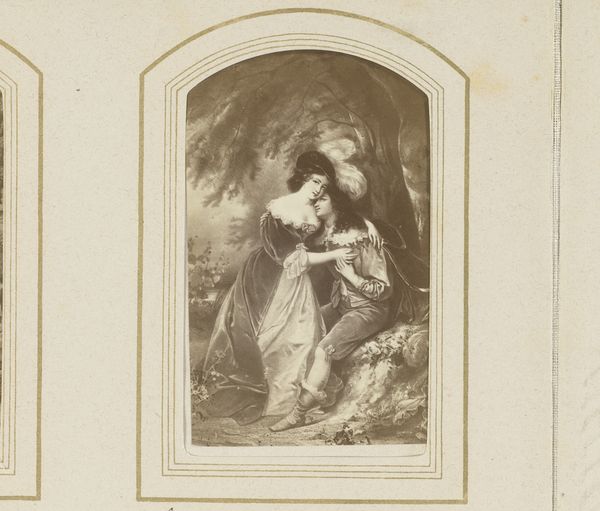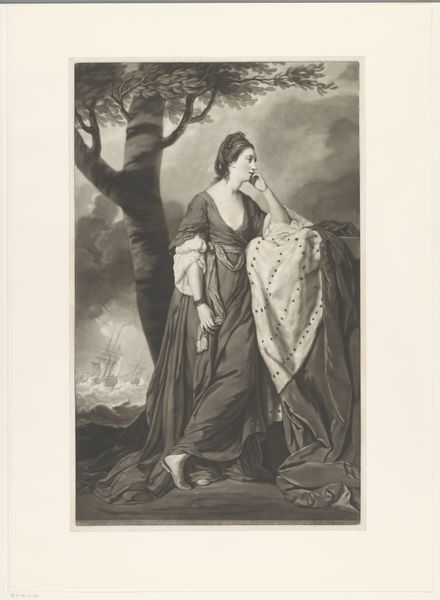
Dimensions: Plate: 29 7/8 × 21 1/8 in. (75.9 × 53.7 cm) Sheet: 31 1/2 × 22 3/4 in. (80 × 57.8 cm) Chine collé: 28 3/4 × 20 1/8 in. (73.1 × 51.1 cm)
Copyright: Public Domain
This is a print titled *The Proscribed Royalist*, by William Henry Simmons. It’s made using a technique called chine collé. This involves printing an image onto a thin sheet of paper, which is then adhered to a larger, sturdier support during the printing process. Look closely, and you’ll see the image is composed of countless tiny dots and lines. These were painstakingly engraved into a metal plate. The ink is held in these recesses, and then transferred to paper under immense pressure. This was not a quick process; it demanded skilled labor, and a good deal of time. The social context here is crucial. Prints like this one democratized art. They made images accessible to a wider audience, far beyond the wealthy elite who could afford original paintings. They were also powerful tools for disseminating political messages, like the image of the Royalist family hiding in fear. Consider the amount of work embedded in this object, and how that labor connects to broader themes of class, politics, and consumption. It challenges the traditional hierarchy of art, prompting us to consider the value and significance of the skilled crafts involved in its production.
Comments
No comments
Be the first to comment and join the conversation on the ultimate creative platform.
